ZebraMusselPrevention
Ute Water’s service area encompasses most of the Grand Valley. It’s been said that between 50% and 65% of Lake Powell visitors are from Colorado, and the primary route to Lake Powell is directly through our service area utilizing Interstate 70 (I-70). Lake Powell and Lake Mead have been inundated with zebra and quagga mussels for years, and boats from Lake Powell and Lake Mead have been linked to reservoirs in Colorado that have tested positive for mussel DNA or larval stage mussels. Given the close proximity of the Grand Valley to Lake Powell, and I-70 traveling through the Grand Valley, Ute Water is taking action to prevent mussels from being introduced into our Plateau Creek watershed.
Ute Water’s source water collection system consists of reservoirs, diversion structures and pipelines, all of which can be significantly impacted by the colonization of zebra or quagga mussels. Not only could mussels significantly reduce our ability to deliver water to our water treatment facility, eradication efforts would be very expensive. Currently, there is not a proven method to effectively remove mussels from a reservoir without substantial damage to the entire ecosystem.
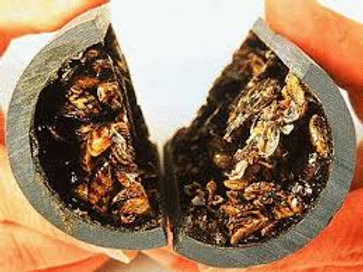
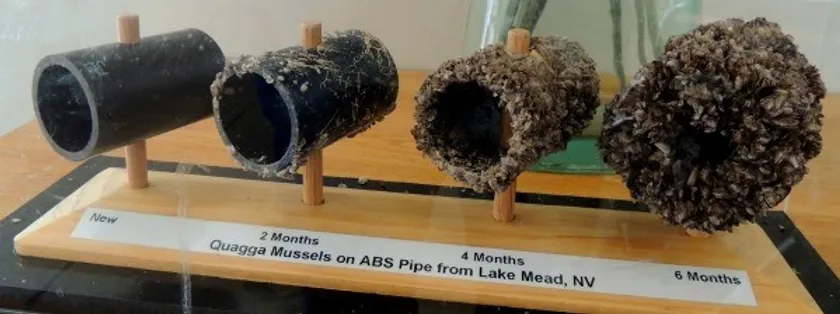
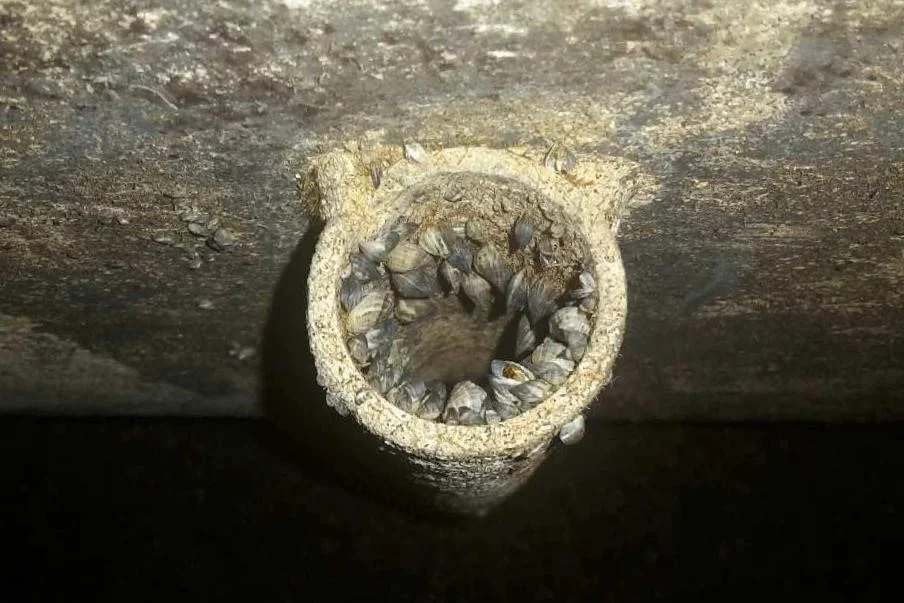
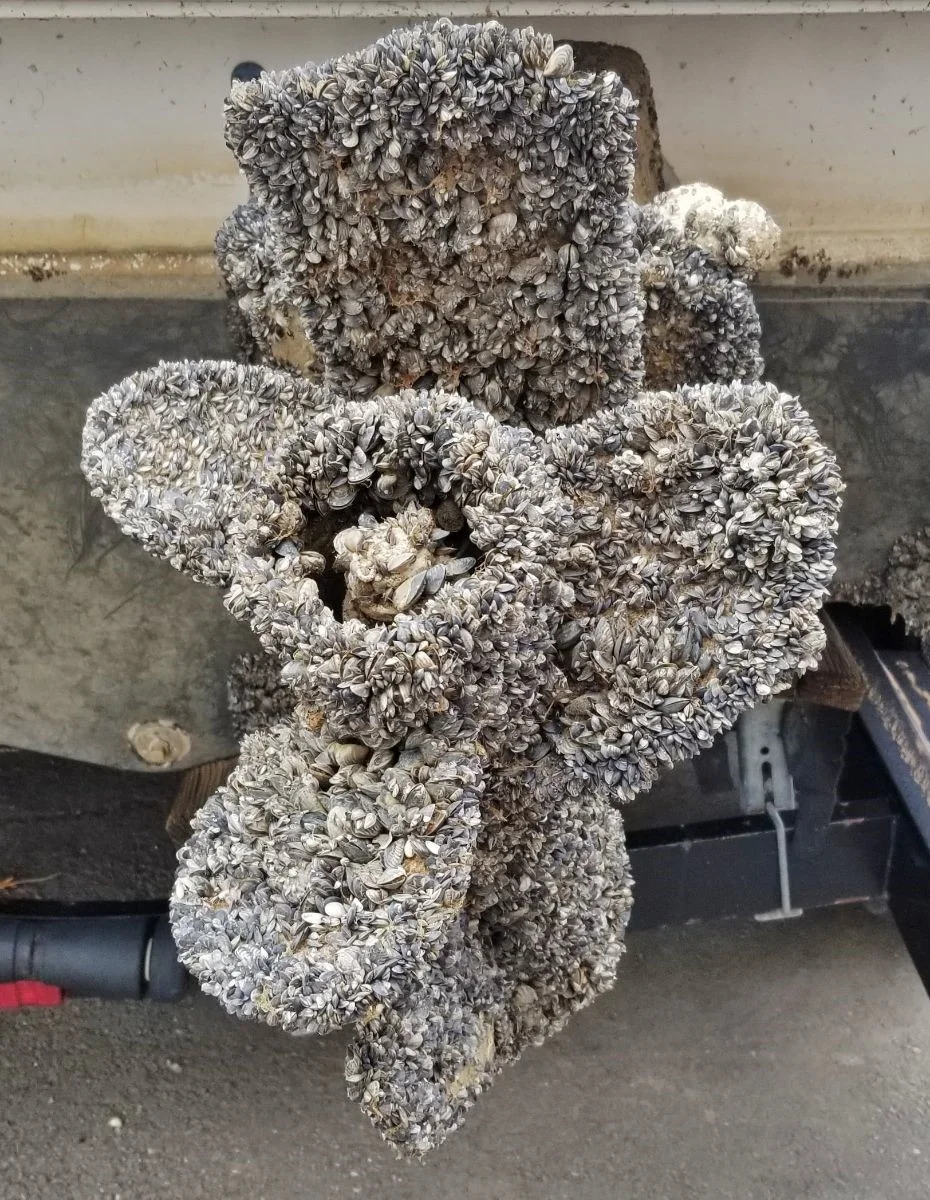
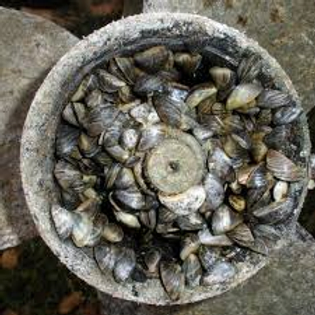







IF YOU FIND A MUSSEL ON YOUR BOAT OR TRAILER
If you find anything that you think is an invasive species on your trailer, boat or in a water body, report it to CPW by calling (303) 291-7295 or emailing Invasive.Species@state.co.us. Take and send pictures if possible.
Many aquatic nuisance species (ANS), including quagga and zebra mussels, have been introduced into Colorado’s reservoirs by boats and trailers that have been exposed to reservoirs or lakes that have tested positive for quagga and/or zebra mussels.
Adult zebra and quagga mussels attach to almost any surface by byssal threads, which are produced by a special organ, the byssal gland. These threads are very strong and protrude between the two halves of the shell and look like small tentacles. The mussels use byssal threads to firmly attach themselves to underwater surfaces including boats, trailers, motor props, float tubes and waders.
Adult mussels can live out of water for up to 7 days, making it critical that watercrafts are cleaned, drained and dried! If boats, trailers, motors, float tubes, waders and other watercraft that come in contact with water are not properly cleaned, drained and dried, there is potential for mussel contamination.
The larval stage of a mussel is called a veliger. Veligers are very small and are able to survive in moist areas like the bilge or transom of a boat for several days. If the bilge is not properly drained prior to entering a body of water, the remaining bilge water can contaminate the next reservoir the boat is launched on. If the boat transom is not properly cleaned, drained and dried prior to launching on a reservoir, there is potential for contamination.
Quagga mussels (Dreissena bugensis) and zebra mussels (Dreissena polymorpha) are small freshwater bivalve mollusk-animals with two shells. They are relatives of clams and oysters. It is very difficult for a non-expert to tell the two species apart.
The shell color of both mussels’ alternates between a yellowish and darker brown, often forming stripes. Color patterns are highly variable and can be attributed to environmental factors. They range in size from microscopic up to about two inches long.
Unlike native North American freshwater mussels, which burrow in soft sediment, adult zebra and quagga mussels can attach to most hard and semi-soft surfaces via their byssal threads. Native species do NOT have byssal threads! These byssal threads are one of three main invasive characteristics that give zebra and quagga mussels an advantage over natives, along with rapid reproduction and their ability to filter feed at amazing rates.
Both quagga and zebra mussels reproduce and colonize very quickly. Mussels are prolific filter feeders and can impact a fishery by creating a gap in the food chain. Mussels forage on green algae, bacteria, phytoplankton and zooplankton, creating a lack of food for small fish and other food sources for trout, bass and other sport fish. This also results in an extremely clear water column, creating perfect conditions for blue-green algae, cyanobacteria, to proliferate and cause algae blooms. Blue-green algae have an air vacuole and can adjust their buoyancy to avoid the mussels and take advantage of the nutrients and can cause extensive blooms that under the right conditions, can become toxigenic.
The outlet structure and piping leaving a reservoir for delivery to the water treatment facility is an ideal location for mussels to colonize and reduce the volume of water a pipe can deliver. In a pipe, a constant flow of water is flowing over the mussels as they filter feed, they rapidly colonize and can significantly decrease the carrying capacity of a pipeline. This results in extensive maintenance efforts to continually clean outlet screens and pipelines. This process can be very expensive and those costs are passed along to our customers.
